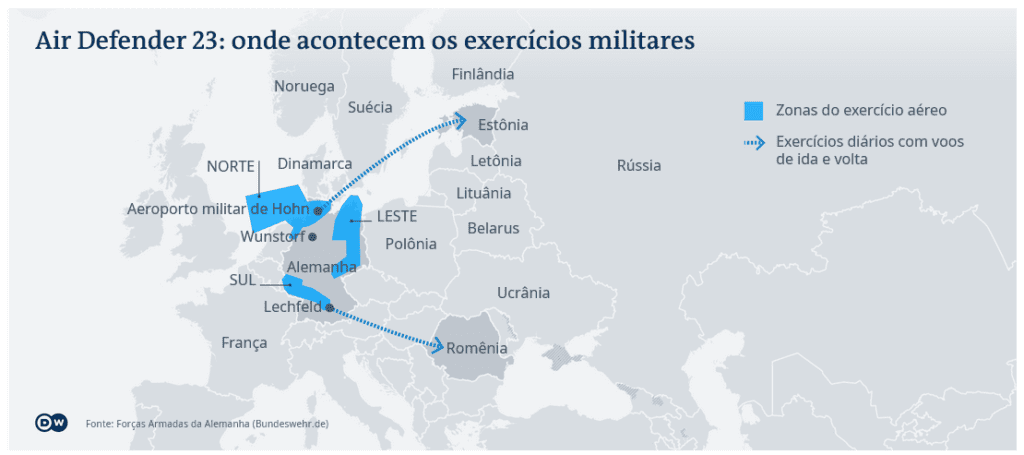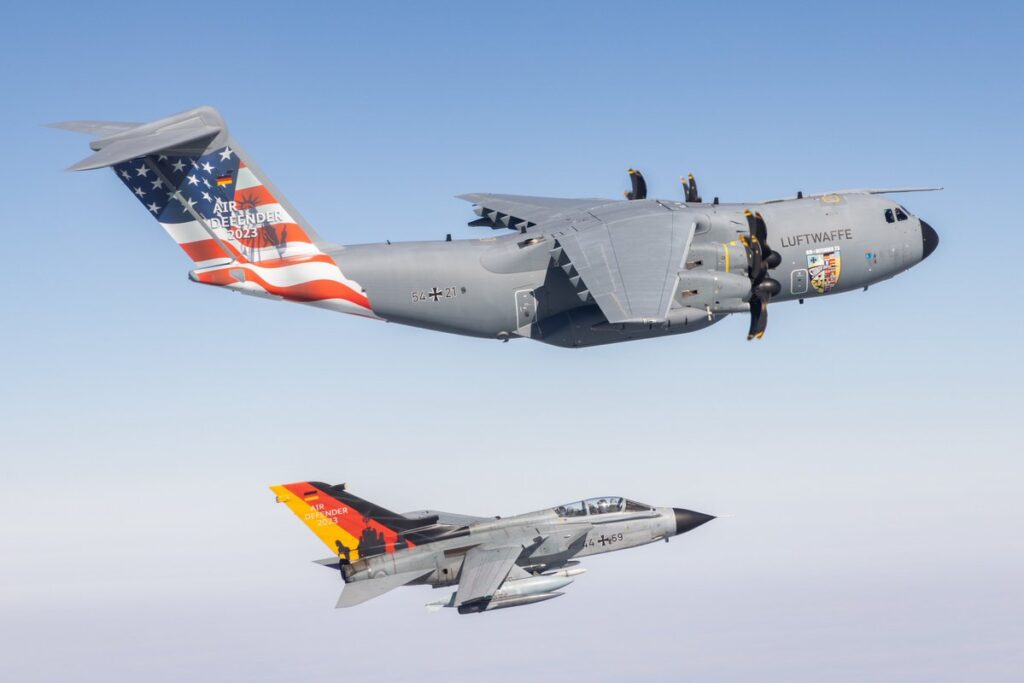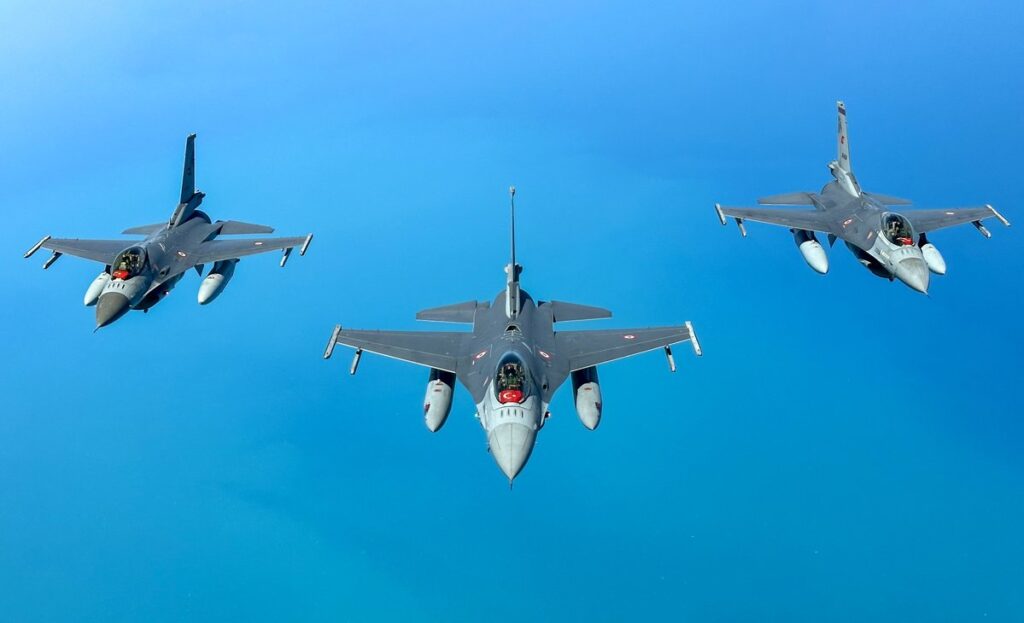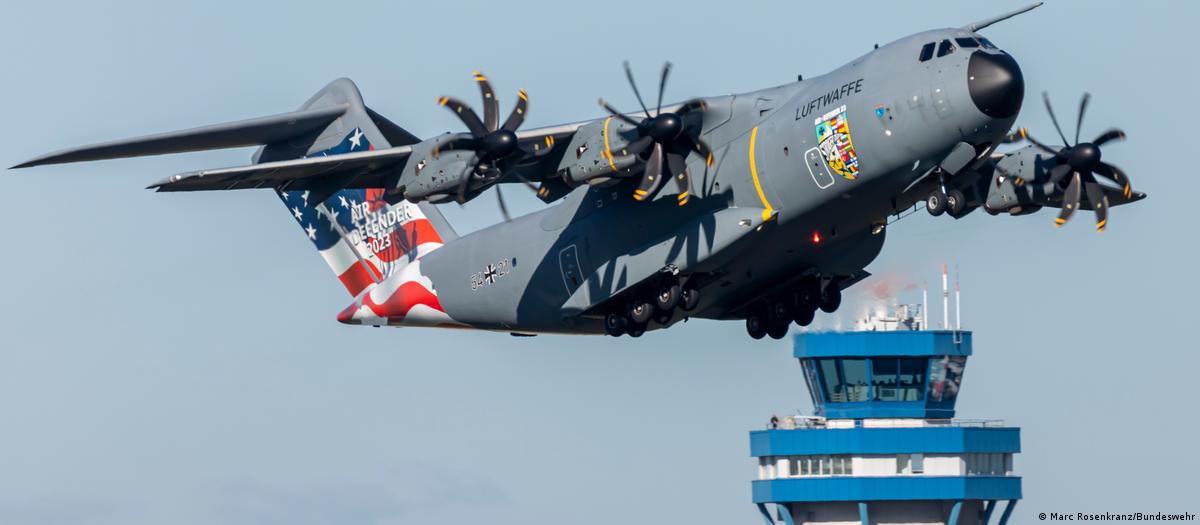Coordinated by Germany, the Air Defender 23 military maneuver takes place over 11 days in European airspace as a warning signal to Moscow.
After four years of preparations, the North Atlantic Treaty Organization (NATO) officially began on Monday (June 12) the largest air exercise in its history, with the participation of 250 aircraft – 100 of them coming from the United States – and 10,000 soldiers from 25 countries. The operation will last until June 23, with Germany as the logistical center.
In an interview with DW, Lt. Loh, director of the US Air National Guard, which is part of the operation, explained: “Air Defender 23 is a large-scale readiness exercise on how we provide air power to Europe. The German Air Force hosts want to test our ability to come together and become fully interoperable.”
Although the maneuvers are taking place in the middle of the war in Ukraine – invaded by Russia on February 24, 2022 and a candidate for NATO membership – Germany emphasizes that the idea dates back to 2018, and that it wants to avoid escalating tensions with Moscow.
“We are doing everything to ensure that it does not have an escalation effect,” Air Force inspector and the highest-ranking pilot in the German military hierarchy, Lieutenant General Ingo Gerhartz, told RBB Inforadio. For example: “We will not make any flights in the direction of Kaliningrad.”
For another: “It is good for us to show that we are strong, that we are able to defend ourselves, to send a very clear signal: the territory of NATO is simply the red line, we are prepared to defend every inch of this territory,” Gerhartz stressed, also highlighting Germany’s key role in the maneuver. “Germany is standing up and taking responsibility.”

What if Germany were under occupation?
As is customary in major military maneuvers, Air Defender 23 is guided by a fictitious situation, but as realistic as possible. In this case, it is a response to the attack on one of the member countries of the military alliance. The German news portal Tagesschau.de describes the script thus:
“A military alliance from the east, with the made-up name ‘Occasus’, already dominates parts of Germany, and now also intends to occupy the port of Rostock with special troops. The allied forces are trying to defeat this offensive.” In addition: “The population is weakened by the covid-19 pandemic, energy reserves are running out, the enemy is carrying out sabotage operations.”
“All this has been developed over the past two years as a roadmap,” Tagesschau.de continues. “Russia is not expressly mentioned with even one syllable, and NATO has repeatedly emphasized that the megamaneuver is purely defensive in character, not directed against Moscow.”
Commercial air traffic disturbance expected
The training will cause temporary blocks to civil aviation in three zones of German airspace: the northern coast and the eastern and southwestern regions. This is likely to be one of the biggest challenges of the exercise, as these areas are part of the most heavily used civil aviation routes around the world, and its impact on the industry is still uncertain.
Gerhartz said he expects that commercial flights will not be canceled, but did not rule out delays in landings and takeoffs. On the business side, the same expectation was reinforced by the European airline association Airlines for Europe. While not predicting cancellations, the association minimized the impact of any delays, it did not rule out major inconveniences for passengers.
Air traffic specialist Clemens Bollinger points out that, unlike what happens in other European countries, civilian and military air traffic controllers have been working together in Germany for 30 years, precisely because traffic in German airspace is intense.
According to him, in France it is common for the military to close off entire areas to civil aviation, but this does not happen in Germany. “The experience and expertise of the technicians alone is not enough to guarantee punctuality,” Bollinger points out, even more so at a time when air traffic in European space is returning to levels similar to those before the pandemic: “There are many factors that can generate delays, such as thunderstorms, other weather events or [airspace] congestion.”


Air routine maintenance also signals to Russia
“By choosing to hold the military exercise parallel to regular civilian air traffic, NATO sends a political message to Russia,” stresses Toben Arnold of the German Institute for International and Security Affairs (SWP). “Obviously it is a clear signal in the sense of demonstrating, even with an over frequented airspace, the readiness and willingness to defend the alliance’s territory.”
Lieutenant General Gerhartz explains that the exercises include simulations also on the ground, such as evacuation from airports – a scenario apparently included after the scenes of chaos at Kabul airport with the Taliban takeover of Afghanistan in 2021, when the United States and allied countries ended their operations in the country.
Other scripts simulate supporting ground troops, air battles, and neutralizing medium-range rockets. For this last mission, the U.S. military will send the most modern NATO fighter, the F-35 stealth bomber. Defense against submarines and ships will also be trained in the North Sea, Arnold adds.

Megamaneuver coincides with Ukrainian counteroffensive
Although many associate the exercise with Russia’s invasion of Ukraine, Gerhartz of the German Air Force made no mention of the Russians during the presentation of Air Defender 23 to the press in Berlin.
It was up to the US ambassador to Germany, Amy Gutmann, to take the initiative to mention Russian President Vladimir Putin by name on the occasion, stressing that “preparation and prevention have never been more important than they are today.
The NATO exercise may have not so unwelcome side effects: that of challenging a Russian military intelligence divided between studying training and dealing with an increasingly intense Ukrainian counteroffensive in the south and east of the country.

